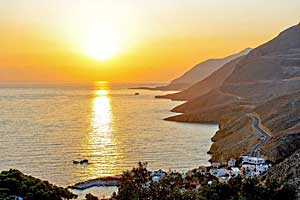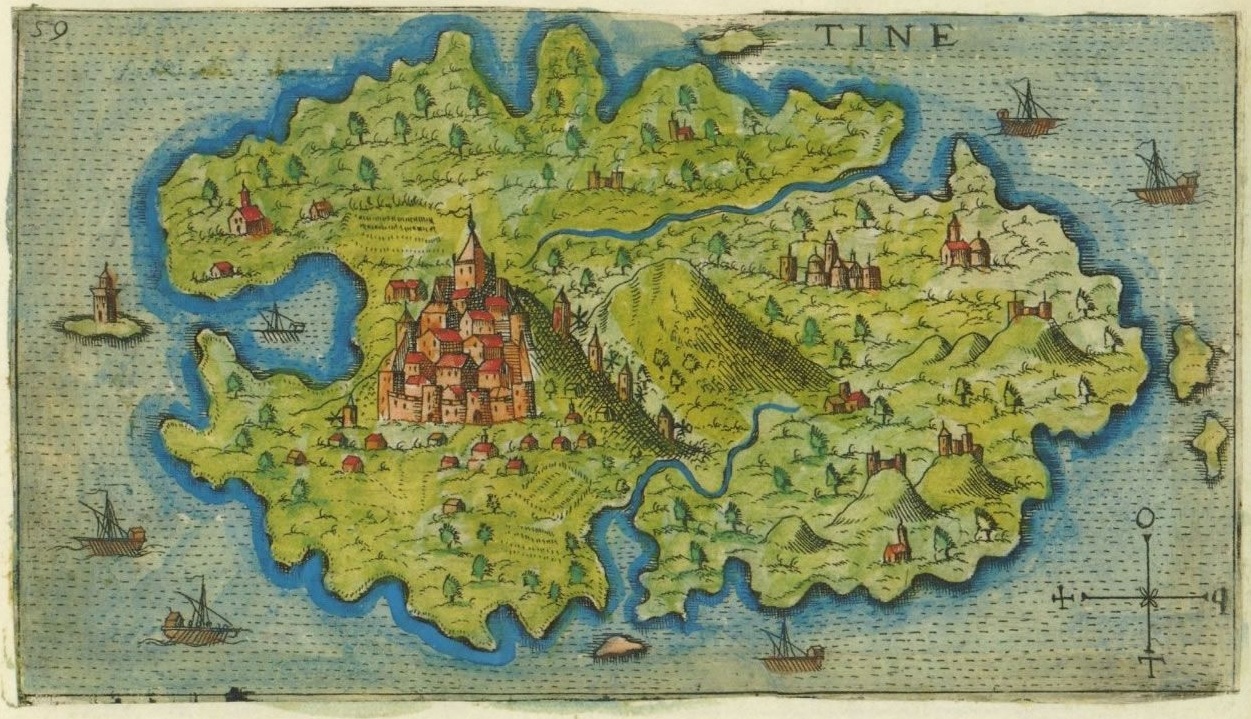|
Maria Daskalogianni
Maria Daskalogianni () was a fighter in the Greek revolution of 1770 and the Greek War of Independence. She came from the Anopolis village in Sfakia, and was the daughter of Ioannis Daskalogiannis, leader of the revolutionaries in Sfakia during the revolution of 1770. Her mother was known as Sgouromallini, and her siblings were Nikolaos, Andreas, Eleftheroussa, and Anthousa. She was captured during the Battle of Anopolis and given as a wife to the Pasha's interpreter, Abdulsamet Pasha. She and her husband then went to Constantinople, where he had a house and property. When her Ottoman husband died, Maria moved to Tinos and became a nun.Χανιώτικα ΝέαΜαρία Δασκαλογιάννη: Μία Κρητικιά ηρωίδα της ελληνικής επανάστασης/ref> When the Greek War of Independence The Greek War of Independence, also known as the Greek Revolution or the Greek Revolution of 1821, was a successful war of independence by Greek revolu ... [...More Info...] [...Related Items...] OR: [Wikipedia] [Google] [Baidu] |
Greek War Of Independence
The Greek War of Independence, also known as the Greek Revolution or the Greek Revolution of 1821, was a successful war of independence by Greek revolutionaries against the Ottoman Empire between 1821 and 1829. In 1826, the Greeks were assisted by the British Empire, Bourbon Restoration in France, Kingdom of France, and the Russian Empire, while the Ottomans were aided by their vassals, especially by the Eyalet of Egypt. The war led to the formation of modern Greece, which would be expanded to its modern size in later years. The revolution is celebrated by Greek diaspora, Greeks around the world as Greek Independence Day, independence day on 25 March. All Greek territory, except the Ionian Islands, the Mani Peninsula, and mountainous regions in Epirus, came under Ottoman rule in the 15th century. During the following centuries, there were Ottoman Greece#Uprisings before 1821, Greek uprisings against Ottoman rule. Most uprisings began in the independent Greek realm of the Mani Pe ... [...More Info...] [...Related Items...] OR: [Wikipedia] [Google] [Baidu] |
Anopolis
Anopolis () was a town and ''polis'' (city-state) of ancient Crete. Stephanus of Byzantium Stephanus or Stephen of Byzantium (; , ''Stéphanos Byzántios''; centuryAD) was a Byzantine grammarian and the author of an important geographical dictionary entitled ''Ethnica'' (). Only meagre fragments of the dictionary survive, but the epit ... claims Anopolis an earlier name of, rather than a predecessor settlement to, Araden (Ἀραδήν) Its site is located near modern Anopoli. References Populated places in ancient Crete Former populated places in Greece Cretan city-states {{AncientCrete-geo-stub ... [...More Info...] [...Related Items...] OR: [Wikipedia] [Google] [Baidu] |
Sfakia
Sfakiá () is a mountainous area in the southwestern part of the island of Crete, in the Chania (regional unit), Chania regional unit. It is considered to be one of the few places in Greece that have never been fully occupied by foreign powers. With a 2021 census population of 2,002 inhabitants living on a land area of , Sfakia is one of the largest and population density, least densely populated Communities and Municipalities of Greece, municipalities on the island of Crete. The etymology of its name is disputed. According to the prevailing theory, it relates to its rugged terrain, deriving from the ancient Greek word ''σφαξ'', meaning land chasm or gorge. Description The road from Chania to Sfakiá crosses the island from north to south, through the village of Vryses. From this village the route crosses the White Mountains (Lefka Ori, Lefká Óri) to Hora Sfakion, Hóra Sfakíon () by the Libyan Sea. Halfway from Vrisses to Hóra Sfakíon is the fertile plateau of Askifou ... [...More Info...] [...Related Items...] OR: [Wikipedia] [Google] [Baidu] |
Daskalogiannis
Ioannis Vlachos (), better known as Daskalogiannis (; 1722/30 – 17 June 1771), was a wealthy shipbuilder and shipowner who led a Cretan revolt against Ottoman rule in the 18th century. Life and activity Ioannis Vlachos was born in Anopolis village in Sfakia, a then semi-autonomous region of Crete, in 1722 or 1730. His father, who was also a wealthy shipowner, sent him to be educated abroad. Due to his education, his compatriots called him "''Daskalos''" (teacher), hence his nickname ''Daskalogiannis'', literally "John the Teacher." He is referred to as a town clerk in 1750, as chairman of the region of Sfakia in 1765, and as the owner of four, three-mast merchant ships. These would have sailed from Omprosgialos and the gulf of Loutro. Daskalogiannis knew Panagiotis Benakis at Mani and it is likely that Benakis introduced him to Count Orlov who Catherine the Great had sent to the Peloponnese in 1769 to instigate a revolt there. Many men from Sfakia also participated in the ... [...More Info...] [...Related Items...] OR: [Wikipedia] [Google] [Baidu] |
Constantinople
Constantinople (#Names of Constantinople, see other names) was a historical city located on the Bosporus that served as the capital of the Roman Empire, Roman, Byzantine Empire, Byzantine, Latin Empire, Latin, and Ottoman Empire, Ottoman empires between its consecration in 330 until 1930, when it was renamed to Istanbul. Initially as New Rome, Constantinople was founded in 324 during the reign of Constantine the Great on the site of the existing settlement of Byzantium, and shortly thereafter in 330 became the capital of the Roman Empire. Following the collapse of the Western Roman Empire in the late 5th century, Constantinople remained the capital of the Eastern Roman Empire (also known as the Byzantine Empire; 330–1204 and 1261–1453), the Latin Empire (1204–1261), and the Ottoman Empire (1453–1922). Following the Turkish War of Independence, the Turkish capital then moved to Ankara. Although the city had been known as Istanbul since 1453, it was officially renamed as Is ... [...More Info...] [...Related Items...] OR: [Wikipedia] [Google] [Baidu] |
Tinos
Tinos ( ) is a Greek island situated in the Aegean Sea. It forms part of the Cyclades archipelago. The closest islands are Andros, Delos, and Mykonos. It has a land area of and a 2021 census population of 8,934 inhabitants. Tinos is famous amongst Greeks for the Church of Our Lady of Tinos, Panagia Evangelistria, for the island's 80 or so windmills, for about 1,000 artistic dovecotes, for 50 active villages and for the Republic of Venice, Venetian fortifications on the mountain Exomvourgo. On Tinos, both Greek Orthodox and Catholic populations co-exist, and the island is also well known for its sculptors and painters, such as Nikolaos Gysis, Yannoulis Chalepas and Nikiforos Lytras. The island is located near the geographical center of the Cyclades islands complex, and because of the Panagia Evangelistria church, with the reputedly miraculous icon of Virgin Mary that it holds, Tinos is also the center of a yearly pilgrimage that takes place on the date of the Dormition of the ... [...More Info...] [...Related Items...] OR: [Wikipedia] [Google] [Baidu] |
Our Lady Of Tinos
Our Lady of Tinos (, '' Panagía Evangelístria tēs Tēnou'', "The All-Holy Bringer of Good News", and , ''Megalócharē tēs Tēnou'', "She of Great Grace") is the major Marian shrine in Greece. It is located in the town of Tinos on the island of Tinos. The complex is built around a miraculous icon which according to tradition was found after the Virgin appeared to the nun Pelagia and revealed to her the place where the icon was buried. The icon is widely believed to be the source of numerous miracles. It is by now almost completely encased in silver, gold, and jewels, and is commonly referred to as the "''Megalócharē''" (" he ofGreat Grace") or simply the "''Chárē Tēs''" ("Her Grace"). By extension the church is often called the same, and is considered a protectress of seafarers and healer of the infirm. The icon was found on the very first days after the creation of the modern Greek State, henceforth Our Lady of Tinos was declared the patron saint of ... [...More Info...] [...Related Items...] OR: [Wikipedia] [Google] [Baidu] |
1823 Deaths
Events January–March * January 22 – By secret treaty signed at the Congress of Verona, the Quintuple Alliance gives France a mandate to invade Spain for the purpose of restoring Ferdinand VII (who has been captured by armed revolutionary liberals) as absolute monarch of the country. * January 23 – In Paviland Cave on the Gower Peninsula of Wales, William Buckland inspects the " Red Lady of Paviland", the first identification of a prehistoric (male) human burial (although Buckland dates it as Roman). * February 3 ** Jackson Male Academy, precursor of Union University, opens in Tennessee. ** Gioachino Rossini's opera ''Semiramide'' is first performed, at ''La Fenice'' in Venice. * February 10 – The first worldwide carnival parade takes place in Cologne, Prussia. * February 11 – Carnival tragedy of 1823: About 110 boys are killed during a stampede at the Convent of the Minori Osservanti in Valletta, Malta. * February 15 (approx.) – The first officially recognis ... [...More Info...] [...Related Items...] OR: [Wikipedia] [Google] [Baidu] |
Greek Monks
Greek may refer to: Anything of, from, or related to Greece, a country in Southern Europe: *Greeks, an ethnic group *Greek language, a branch of the Indo-European language family **Proto-Greek language, the assumed last common ancestor of all known varieties of Greek **Mycenaean Greek, most ancient attested form of the language (16th to 11th centuries BC) **Ancient Greek, forms of the language used c. 1000–330 BC **Koine Greek, common form of Greek spoken and written during Classical antiquity **Medieval Greek or Byzantine Language, language used between the Middle Ages and the Ottoman conquest of Constantinople **Modern Greek, varieties spoken in the modern era (from 1453 AD) *Greek alphabet, script used to write the Greek language *Greek Orthodox Church, several Churches of the Eastern Orthodox Church *Ancient Greece, the ancient civilization before the end of Antiquity *Old Greek, the language as spoken from Late Antiquity to around 1500 AD *Greek mythology, a body of myths or ... [...More Info...] [...Related Items...] OR: [Wikipedia] [Google] [Baidu] |





